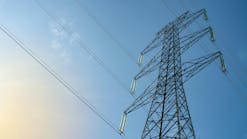The New York Power Authority, as part of a comprehensive decarbonization strategy, announced the results of a green hydrogen demonstration project showing decreased carbon emissions when using hydrogen blended with natural gas to generate power at the Power Authority’s Brentwood Small Clean Power Plant on Long Island.
The demonstration project, led by NYPA in collaboration with EPRI, General Electric and Airgas, an Air Liquide company, retrofits a natural gas facility and enables the use of hydrogen mixed with natural gas to power the plant and make electricity.
NYPA and its industry collaborators demonstrated that the plant was fully operational while safely using the hydrogen blend. The project informs New York and the power industry by demonstrating that hydrogen may be one valuable tool to help decarbonize power generation.
While NYPA and other power companies already use hydrogen for equipment cooling, this project marks the first time it was tested as a fuel blend for use in electricity generation at a NYPA generator. In July 2021, the State of New York announced its intent to explore the potential role of clean hydrogen.
Working with its collaborators, NYPA led a hydrogen fuel demonstration from the fall of 2021 to the spring of 2022, investigating the potential of substituting clean hydrogen—produced using renewable energy, including wind, solar, and hydroelectricity—for a portion of the natural gas used to fuel NYPA’s Brentwood Power Station in Suffolk County on Long Island.
Under the project, NYPA demonstrated power generation utilizing blends of 5%-40% hydrogen with natural gas to identify and document any resulting impacts on GE’s LM-6000 combustion turbine engine and the unit’s operation. The project found that carbon emissions decreased as the amount of hydrogen increased.
In addition, at steady state conditions, the exhaust stack NOx, CO, and ammonia slip levels showed that emissions could be maintained below the New York State Department of Environmental Conservation (DEC) Title V Regulatory Permit using the existing post-combustion emissions reduction systems, with no known detrimental effects on the gas turbine operations. This result could prove consequential for power plant operators to begin testing and using hydrogen fuels—aiming to lower a facilities’ carbon output—with minimal or no required modifications to plant systems.
NYPA Green Hydrogen Demonstration Project – Reducing Carbon Emissions
NYPA collaborated with General Electric, the gas turbine equipment manufacturer which has significant experience with hydrogen and similar low-BTU fuels. GE assisted in the building of the state-of-the art hydrogen/natural gas blending system. EPRI’s Low-Carbon Resources Initiative helped design the project and served as advisors on the technical evaluation. Airgas supplied the renewable hydrogen for the testing.
Sargent & Lundy was the original architect engineer of the Brentwood plant and provided engineering expertise as well as safety reviews, and Fresh Meadow Power developed the piping system that delivered the hydrogen to the GE-designed mixing skid and, ultimately, into the turbine. This cutting-edge research provides critical insights into the potential for blending clean hydrogen and natural gas, which is one potential use among many possible uses for clean hydrogen.
This data provides more information to support continued broad and inclusive discussions about the future of clean hydrogen in New York and across the northeast region that will leverage the state’s commitment to achieving a zero-emissions electric grid and the area’s unique geographies and abundant renewable resources.
Specific key findings included:
• Reduced CO2 emissions - CO2 (carbon dioxide) mass emission rates (ton/hr) decreased as hydrogen fuel percentages increased, following expected trends. At 47 MWg (megawatt gross), CO2 mass emission rates were reduced by approximately 14% when using 35% hydrogen cofiring.
• Regulatory compliance - At steady water injection conditions, other emissions including NOx (nitrogen oxides), CO (carbon monoxide), and ammonia levels were maintained below regulatory operating permit limits, using the existing SCR (selective catalytic reduction) and CO catalyst post-combustion control systems.
• Reliable operation, asset integrity - Engine control was stable throughout the duration of the test and combustion equipment was in good condition before, during and after the test.
“Airgas, an Air Liquide company, is very proud to lend our expertise in sustainable gas solutions – including renewable hydrogen – to support our customers as they develop new ways to meet climate goals and invent a cleaner, safer, more reliable energy market,” said Marcelo Fioranelli, Airgas CEO and Vice President, Air Liquide Group. “Airgas and Air Liquide share a similar commitment of achieving carbon neutrality by 2050 and are excited to see how hydrogen can be a strong, reliable driver of the energy transition in the power and energy sector.”
The project aligned with NYPA’s strategic VISION2030 priority to decarbonize its natural gas plants and was designed to test and demonstrate the feasibility of using new low-to-zero carbon technologies to help achieve zero-carbon emissions by 2035 (NYPA’s goal) and informs the state’s goal to have a 100% zero emission electricity sector by 2040. New York’s Climate Leadership and Community Protection Act (CLCPA or the Climate Act) calls for an orderly and just transition to clean energy and economy-wide carbon neutrality. From new energy storage initiatives to expanding and upgrading transmission to piloting hydrogen use for generation, considerable progress is being made to transform New York’s power system to catalyze a clean energy economy.
The report details several of the challenges that would prevent ongoing plant operation using the blend, including volume of hydrogen required, little industry experience with blending, and restrictive code requirements.


